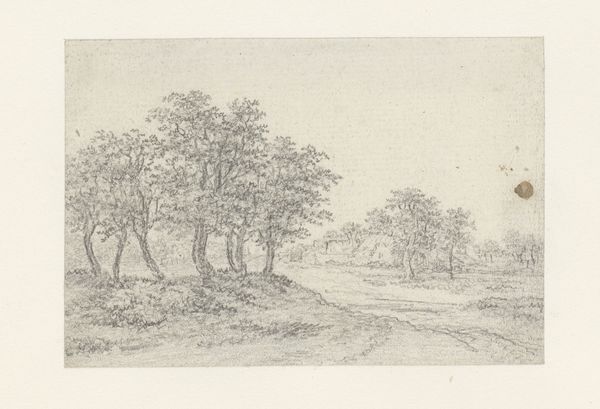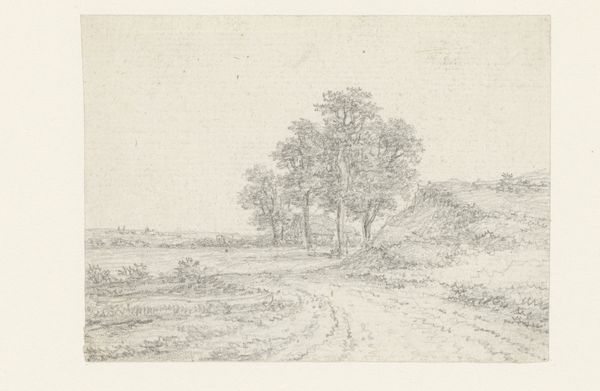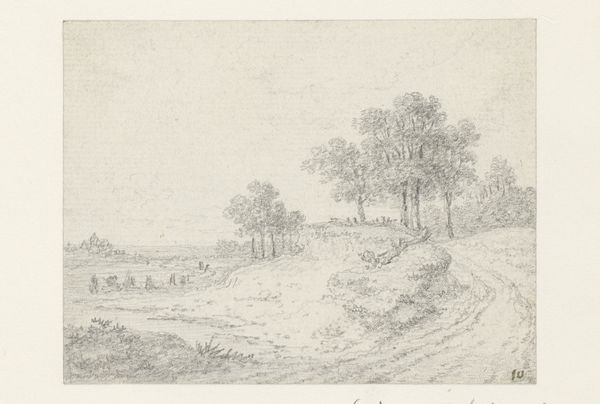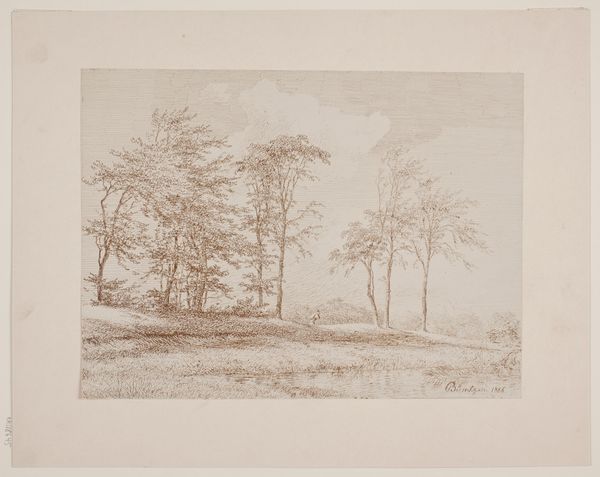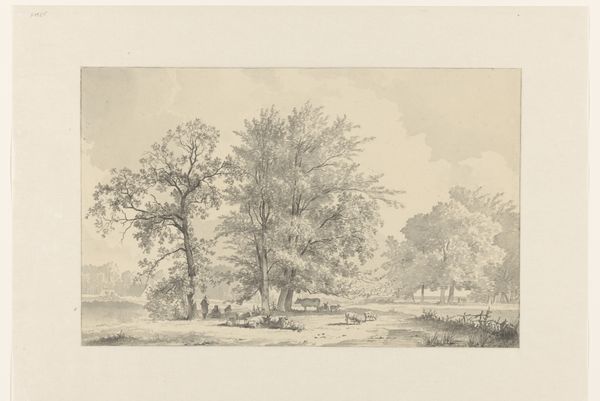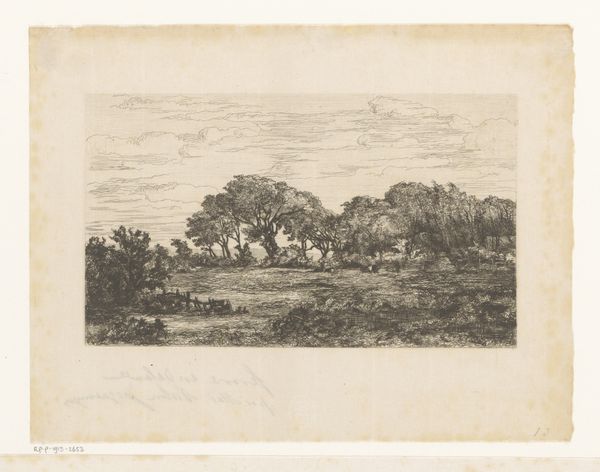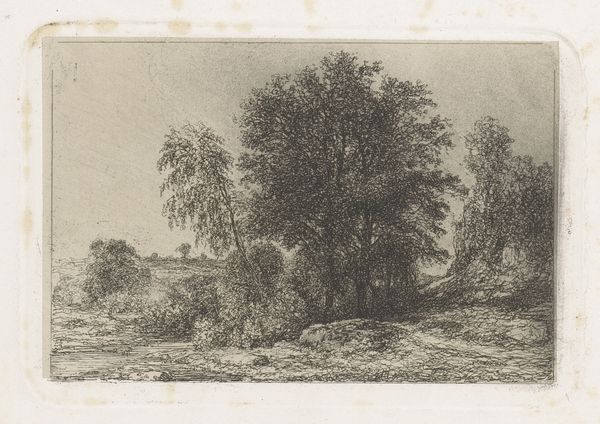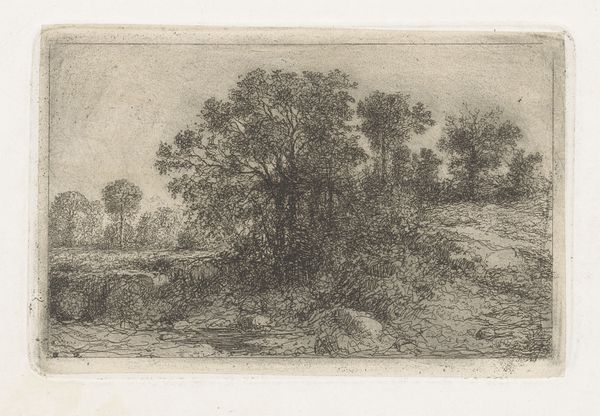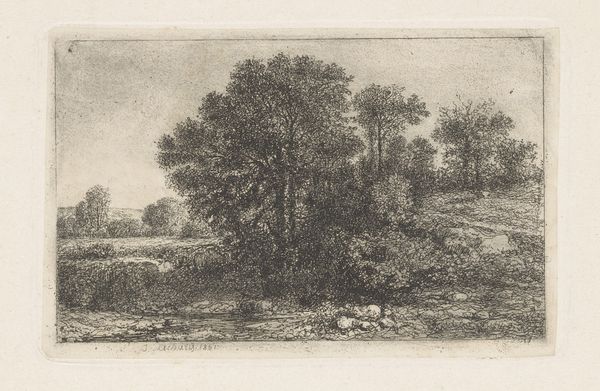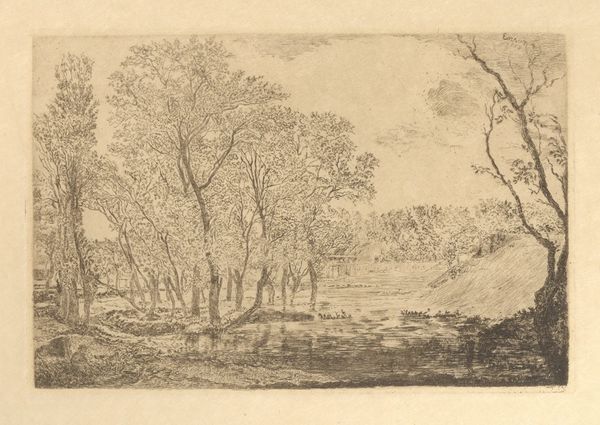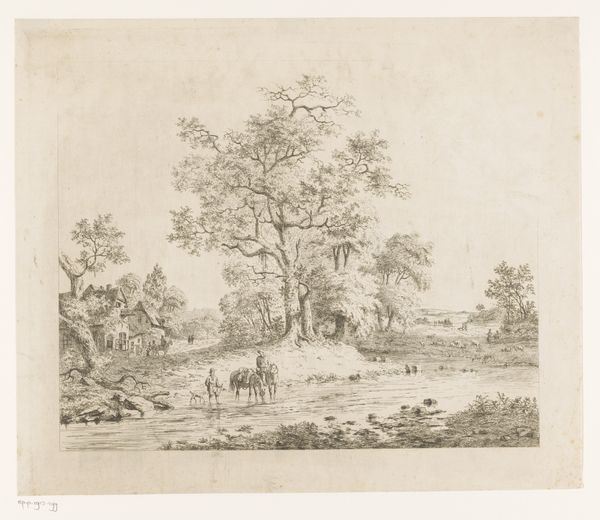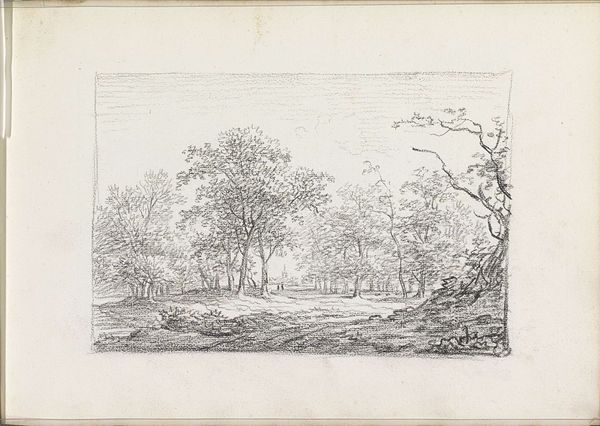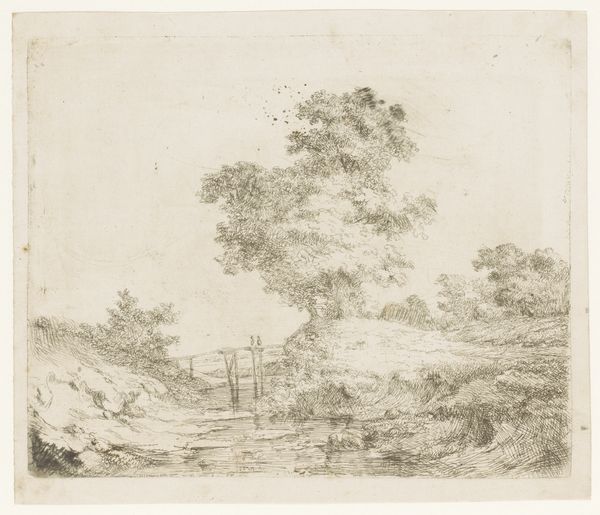
drawing, pencil
#
drawing
#
landscape
#
romanticism
#
pencil
#
realism
Dimensions: height 73 mm, width 98 mm
Copyright: Rijks Museum: Open Domain
Curator: At first glance, the composition feels understated, almost monochromatic, wouldn’t you say? Editor: It evokes a specific time; a pre-industrial rural existence rendered with simple, unadorned honesty. We're looking at "Boerderij in geboomte"—that's "Farmhouse in Trees"—a pencil drawing created sometime between 1773 and 1843 by Georges Michel. Curator: The way Michel uses shading to define the volumes of the trees is rather interesting. There is a dynamic interplay between the detailed foreground and the implied expanse of the background, subtly achieved through variations in pressure and line density. Editor: Michel's artistic choices must be viewed in the social and political context of the time. The focus on rural landscapes provided a powerful counterpoint to the rapid urbanization of Paris. These images served as a kind of social commentary. Was he subtly critiquing societal priorities? Curator: Or could this be, on the contrary, an expression of nostalgia for an imagined idyllic past? The subdued palette draws our attention to texture, and a deep, though somber appreciation of the materiality of the medium itself. See the laid paper showing faintly behind the drawn marks! Editor: The art market of the time heavily influenced the production and consumption of art like this. Urban elites who had become disconnected from the land romanticized rural imagery. Was Michel catering to their desires? How did patronage affect the perceived meaning of a scene like this farmhouse in its landscape? Curator: Those are crucial questions, no doubt, but also notice the underlying structure and patterns here; they shape how we interpret it. Michel captures an undeniable sense of organic symmetry. Editor: So, while you focus on the internal language of form, I suppose, I'm stuck trying to understand what it said within and against its time. It certainly compels reflection. Curator: Indeed. I think we can agree that beyond its representational elements, this artwork offers a window into both the technical facility and societal values of the period.
Comments
No comments
Be the first to comment and join the conversation on the ultimate creative platform.
